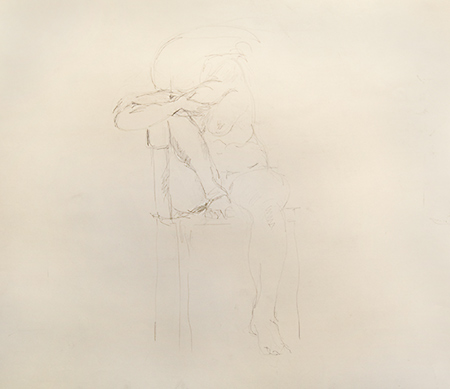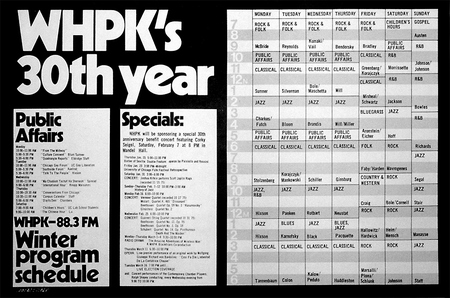I found some dusty old SX-70 prints in my files. They’re in poor condition and were photographed sometime between 1973 to 1975. The first two are photographs of the Indianapolis 500. I didn’t notice until I scanned the first photo, you can see the Goodyear Blimp. That second shot has a nice pan and motion blur, that was really hard to do with the SX-70.
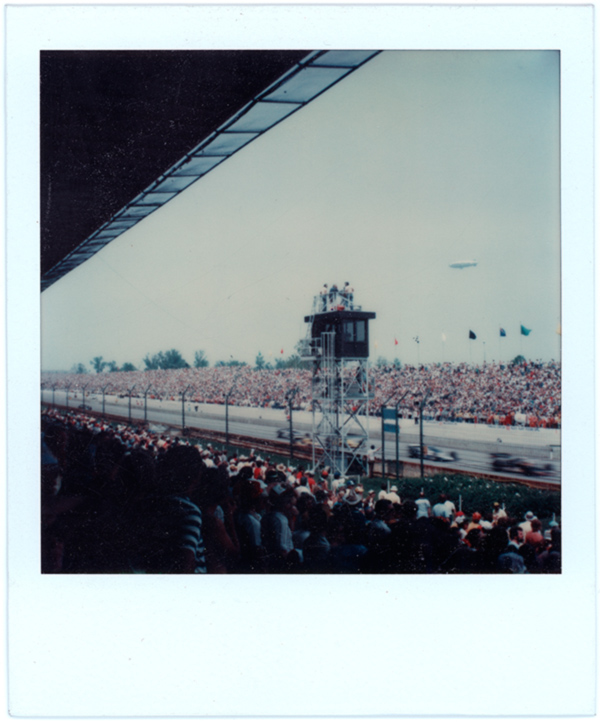
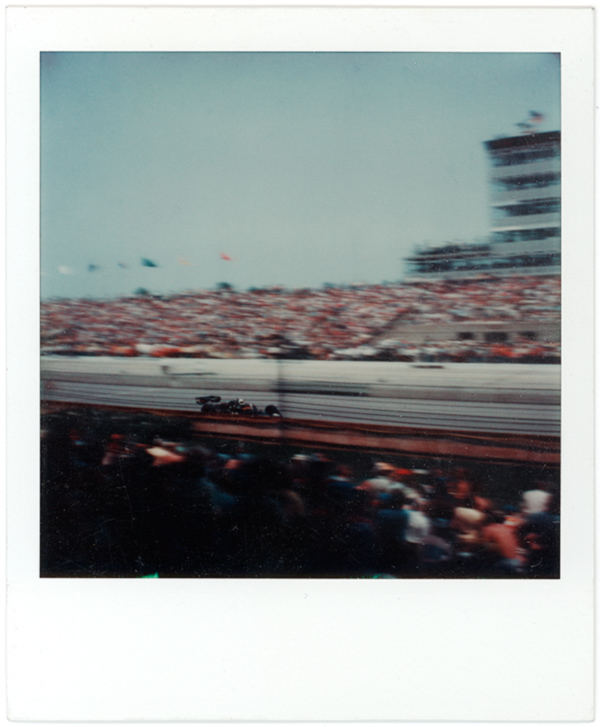
The next image had some cracks in the emulsion, I tried to fix it a little, but I left most of them unretouched. I’m finding out that SX-70 prints were not as indestructible as Polaroid claimed. But the subtle colors in the sky are pretty good.

I always liked the harsh look of the Polaroid Flash Bar, but they were really expensive. I liked using them at night, so the nearby objects were brightly lit, and the illumination quickly drops with distance.
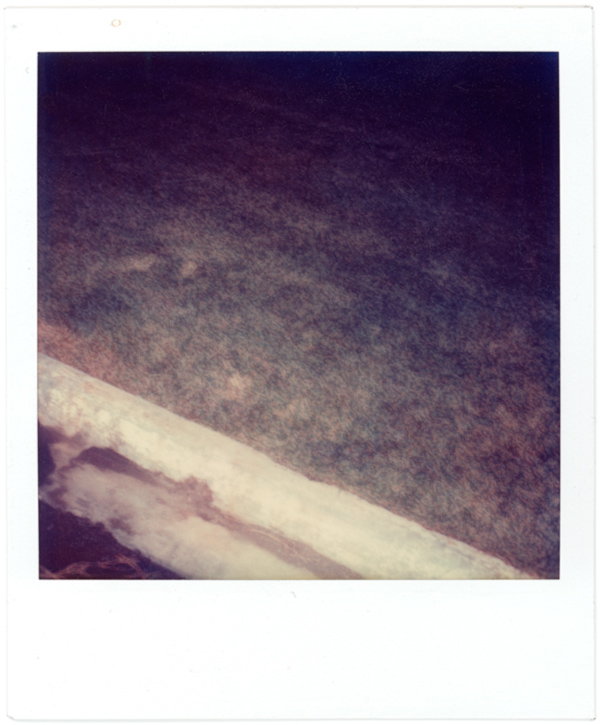
Category: Art
1993: Sphere Study

1995: Tiny Portrait
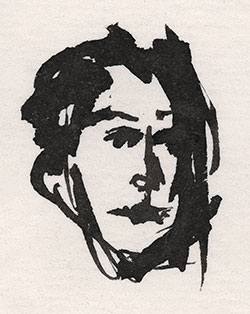
2004: Koi
Here is another experimental print in my antique photochemistry process, I think I made it around 2004. Like a lot of prints I make, I thought this one was a failure. It certainly didn’t turn out the way I intended. But I decided it was not such a failure after all. This is a very large print, 11×16 inches, the largest print I ever attempted in this media.
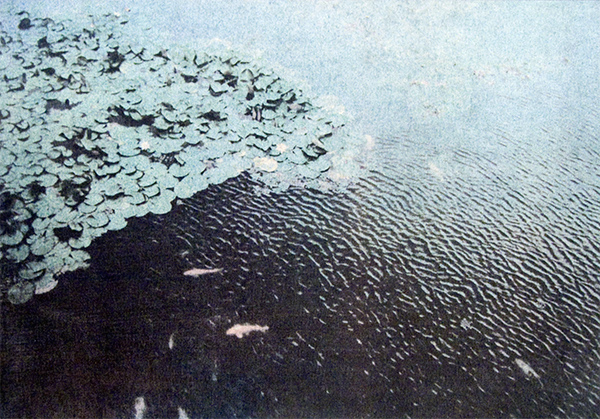
I took this photo with a cheap Fuji disposable 35mm camera, this is the moat at Goryoukaku Fortress in Hakodate, Japan. I scanned the little 5×7 inch print and made digital color separations, that’s where I made the error. I was experimenting with CMYK “undercolor removal” for this color separation. When you have a dark, neutral color, it usually has a large amount of cyan, magenta, and yellow in it, in addition to black. UCR removes those “undercolors” and replaces them with black. But it was a failed experiment, the colors all went too much towards black, which covered up a lot of the brighter colors. This process is fairly high contrast, it has trouble conveying subtle colors. But I did manage to capture some nice, smooth tonal changes that are normally beyond the range of this process. There is a subtle change of light color across the top, as the green lotus pads float in in the blue water. But the darker tones in the left corner went to almost totally black, they were actually dark blue. I think this UCR method is not the way to go for this process, most people only print CMY and don’t print the black at all. This print might have done better with a lighter black layer, but it’s too late to redo the films now. The colors that do appear are subtle and generally faithful to the original (even if they’re a little faint).
But I decided I liked the results in this print anyway, even if it wasn’t what I wanted. The darkest blacks are somewhat blue-black. And even the black seems to work with this image, just as it is. The high contrast brings out the details in the rippling patterns of the water, and the structure of the lotus pads. And there’s a lot of detail in a print this big. Here’s a detail from the print, slightly enlarged.
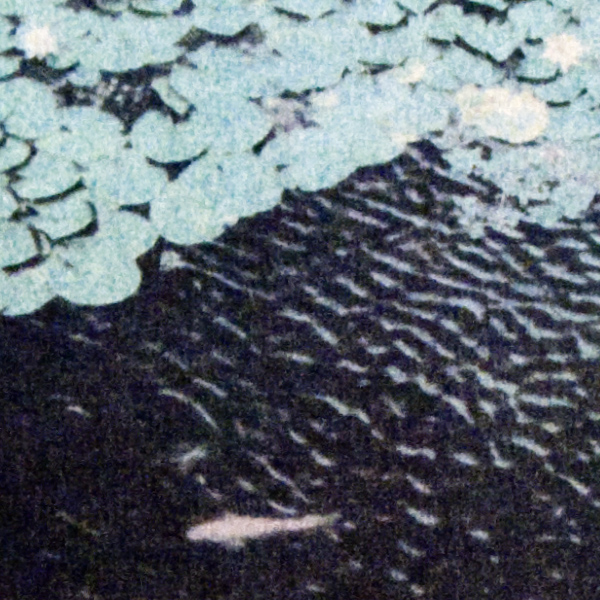
Update: I found another print of this image, it’s small enough to fit on my scanner so I can get improved color accuracy. It has a lighter black negative and doesn’t use UCR, so the midrange, bright colors are more apparent. And you can see fairly good detail in the lower left corner, that wasn’t visible in the other print. But this separation is bad too, you can see too much black in the light areas in the upper right. The midrange tones are pretty good but the light end lost detail. I think this was the separation that inspired me to see if UCR would do better. This separation still isn’t right, but it’s closer than the other one. I can do almost any variation of color separations to get any tonal scale I want, but it can get complex. Ideally I would make 8 negatives, two for each CMYK color, one for the high tones and one for the low tones.
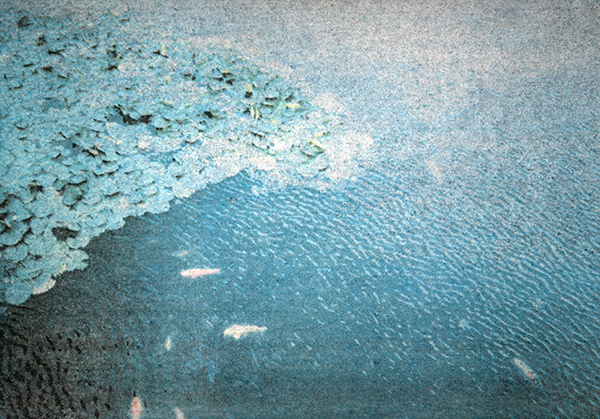
1977: More Color Transfers
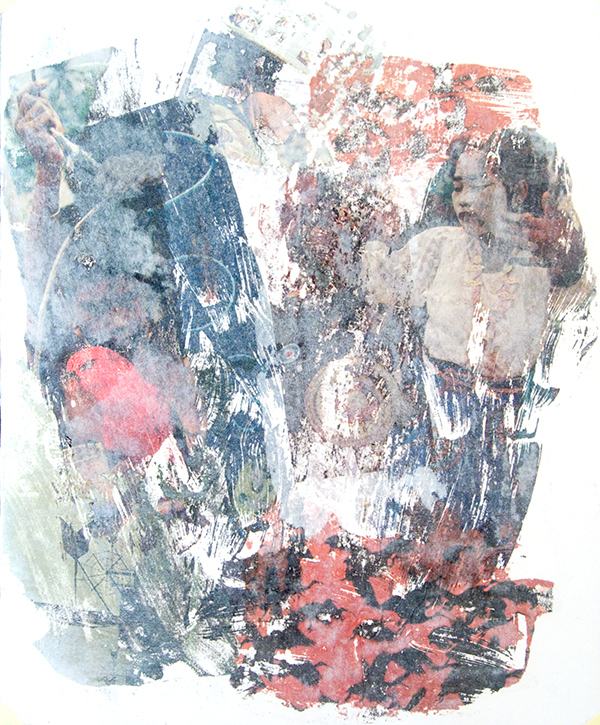
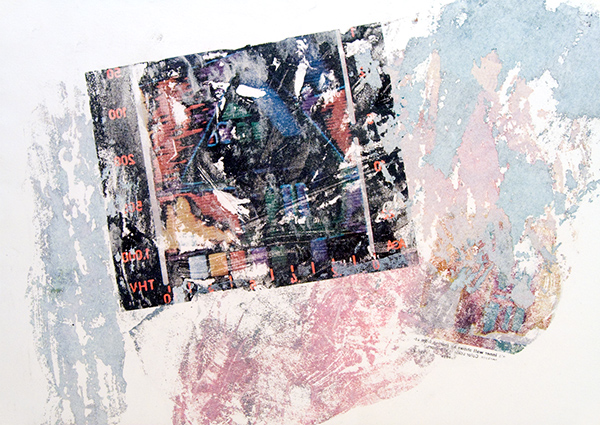
1977: Color Transfer
I found a cache of my ancient artwork from the 1970s, when I was an art student. I’ve been scanning and posting a few of them. I thought this was an interesting piece of collage, it’s a “color transfer” Solvent is applied to magazine photos, the photo is placed against the paper, and the back of the photo is burnished to transfer the image. I think in this one, the solvent was acrylic medium. It has a beautiful texture and the colors are fairly strong. Color transfers tend to have weak, transparent colors, it’s hard to transfer much of the ink.
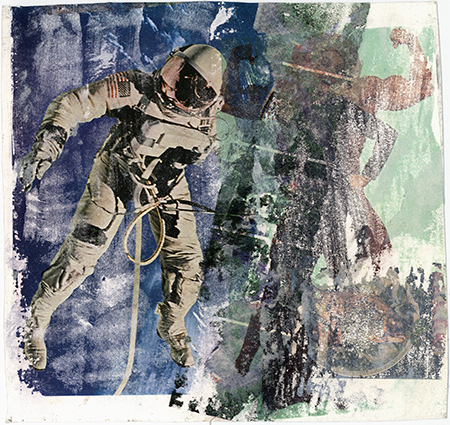
I found several of these prints, but this is the only one small enough to fit on my scanner, it’s about 8 inches square. I might post the other images later if I can get a good reproduction. These seem to be hard to capture.
I remember fiddling with color transfer a bit, sometime around ’77. This is what we used to do when we didn’t have photoshop. It is kind of like monoprinting, but you just have magazine photos as your source. You can manipulate the texture and depth of the transfer, but it’s pretty random. I guess we thought we were all Rauschenbergs, he used color transfer, but he had a professional printmaking atelier to do them properly. This color transfer process was popular around the printmaking department at the U of Iowa, it was so cheap and easy that a lot of students worked with it. But now it’s pretty much a lost art.
1976: Life Drawing 202
1974: My First Gig
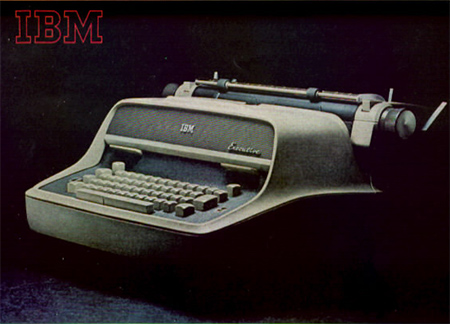
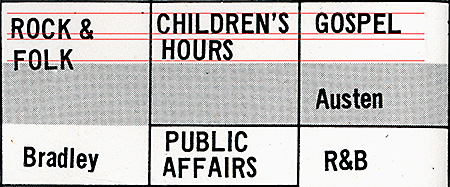
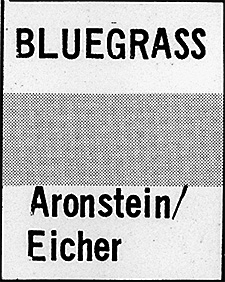
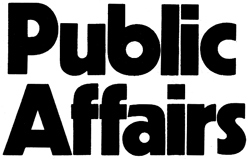
![]() The core idea of this poster was a chronological layout, using gray stripes to guide the eye across the grid. Today this design is known as “zebra stripes,” it’s very common, it is even used on computer screens to display long file lists. I got the idea from “green bar” computer paper, it had green zebra stripes to guide your eyes across 14 inch wide paper.
The core idea of this poster was a chronological layout, using gray stripes to guide the eye across the grid. Today this design is known as “zebra stripes,” it’s very common, it is even used on computer screens to display long file lists. I got the idea from “green bar” computer paper, it had green zebra stripes to guide your eyes across 14 inch wide paper.
stiff poster paper for this job.
1975: 3M VQC Copier Art
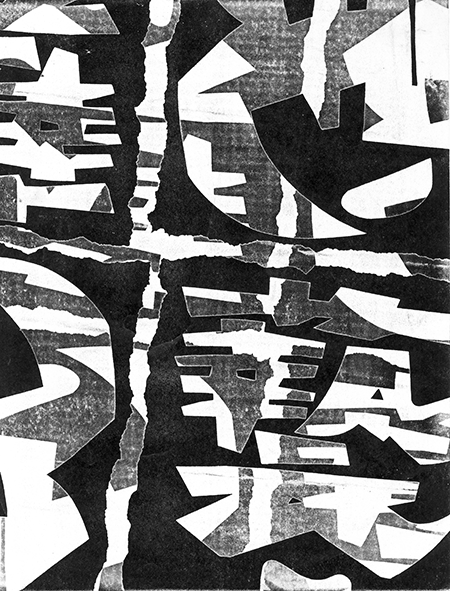
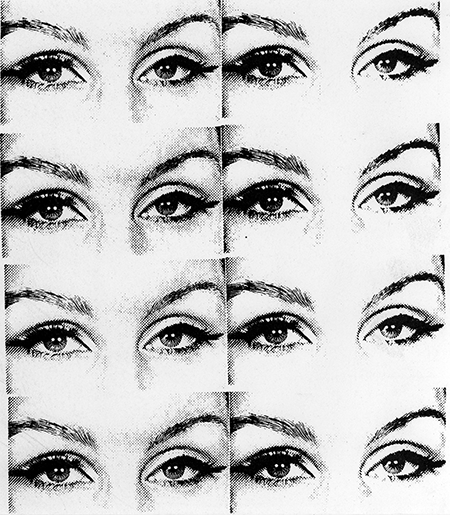
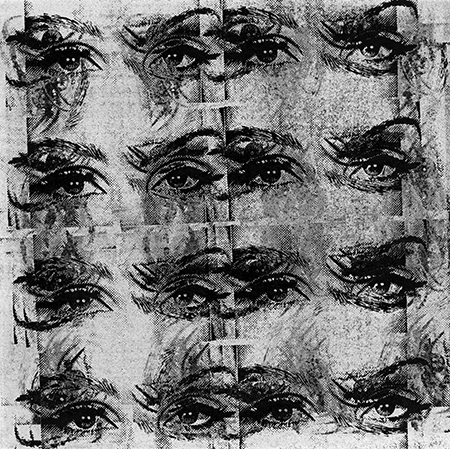
1976: Life Drawing 101
I was going through some folios of old artwork and found this little sketch from my oldest Life Drawing classes. This must date to around 1976. I was a total rookie at drawing, this is kind of embarrassing, but I can see some good qualities here. This sort of artwork would be considered “juvenilia,” work done as a young artist who hadn’t quite figured out what he’s doing.
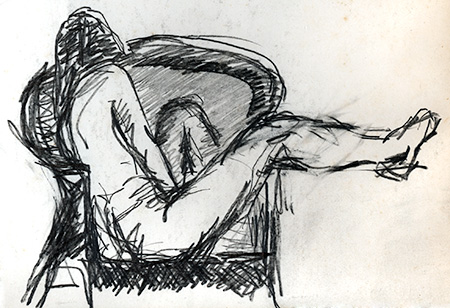
Now obviously I’m struggling here with the proportions of the leg, there are some erasures and I probably had it better before I erased it. The leg and torso are presented flat in the picture plane, so I did have some sort of idea of what I was trying to do with this drawing. The left leg also has problems, but it is shaded in a way that pushes it back from the picture plane. You can see it took me a couple of tries to get the round shape of the wicker chair, but it’s shaded rather nicely. There are two or three different pencil hardnesses in use here.
But I am rather more pleased with the torso and shoulder, the proportions are right and it forms the front plane with the leg. It’s hard to indicate the roundness of forms when you draw in these sketchy strokes, executed so rapidly. But the sketchy strokes work well when just suggesting the shape of a shoulder blade, the shadow under the upper arm, or the shape of the hips and buttocks. The round curves in the back of the chair pull the picture inward, while the square front of the chair helps establish the front plane of the model.
The problem with this sort of life drawing is that the poses are only a few minutes, so you don’t have time to work everything out. The classes are designed to help you work out your issues with proportion and lighting, but you can only work on a couple of things in a single drawing. It’s almost impossible to get it all right.
This drawing is about six inches across, in the corner of a large 18 x 24 inch sheet of paper. The full page is taken up by an unfinished sketch in large, rough, black chalk, working out the composition. It is obviously abandoned but has the same composition as the sketch. I can tell I did a quick chalk sketch but didn’t like it, and didn’t want to waste the whole sheet of paper, so I did this little sketch in the corner.
I am not an artist with natural draftsmanship skills, it’s hard work developing those skills. I still have poor draftsmanship, which is pathetic because I have a BFA degree in Drawing and Painting. Obviously being unable to draw well is not an obstacle to an art degree in Drawing. I recently did some Life Drawing studio sessions and I can tell I still struggle with the same problems of body proportion and how to convincingly portray it. Now I have other qualities that help my drawing rise above the level of just another poor draftsman, and I can see some faint impressions of my current drawing methods in this old drawing. That’s why artists sometimes keep juvenilia, to compare it to their current work, and see where they came from.

